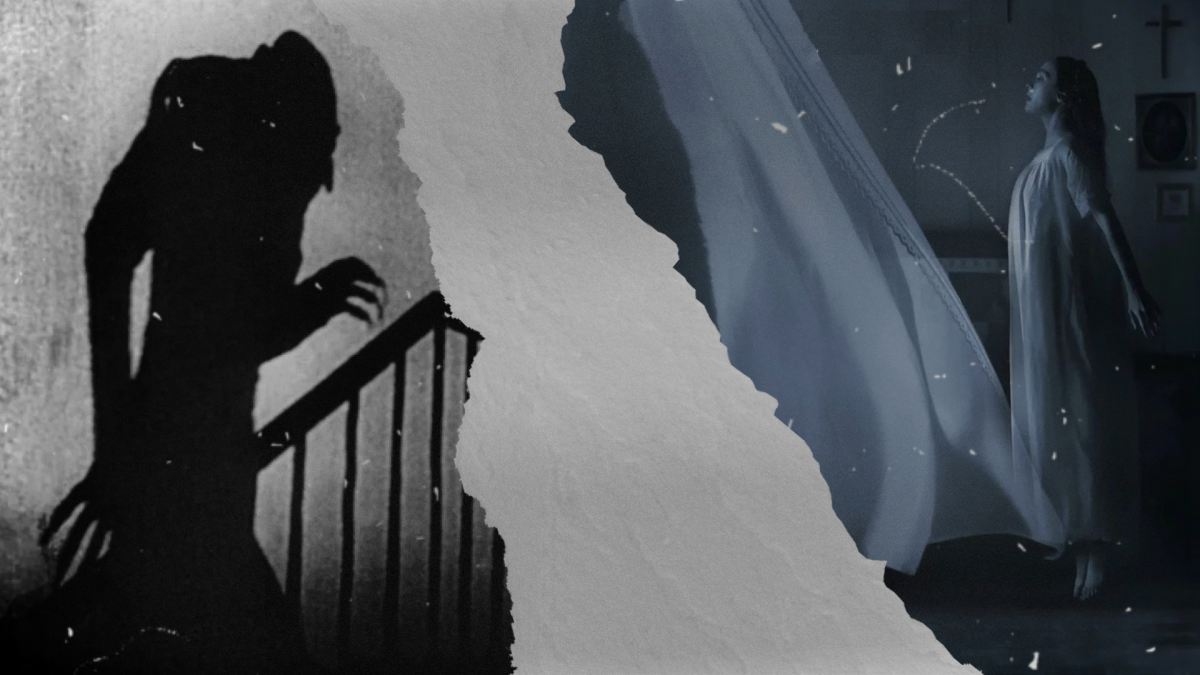When F.W. Murnau made his 1922 classic, “Nosferatu,” it set the stage for horror cinema. Nearly a century later, director Robert Eggers’ 2024 reimagining has continued the legacy of the iconic vampire film, offering a fresh take while still paying homage to its roots.
The Original Nosferatu (1922): The Birth of the Vampire Mythos
Murnau’s “Nosferatu: A Symphony of Horror” was released in 1922 and remains one of the most influential films in the horror genre. An unofficial adaptation of Bram Stoker’s “Dracula,” the film tells the story of Count Orlok, a vampire played by Max Schreck, who preys upon a young woman named Ellen. Rather than adapting the story directly, Murnau made several key changes, including renaming the characters (Count Orlok for Count Dracula, for example) and altering key plot points, ultimately leading to a copyright lawsuit from Stoker’s estate. Despite the legal controversy, “Nosferatu” became an instant classic.
The film is often credited with shaping the visual language of horror. It embraced the German Expressionist style, which emphasized distorted, surreal visuals, high-contrast lighting and unnerving, exaggerated performances. The stark use of shadows, combined with Orlok’s rat-like appearance and unsettling movements, created an atmosphere of dread that still influences vampire cinema to this day. The film also played on post-WWI anxieties, drawing parallels between Orlok’s vampire disease and the real-world fears of pandemics and contagion, themes that resonated deeply with audiences recovering from the Spanish Flu.
While “Nosferatu” was initially met with limited success, and was even banned in Sweden until 1972, its influence grew over time, and it became a piece of cinema history for the horror genre. Due to a court order that forced the destruction of most of the film’s copies, “Nosferatu” was thought to be lost until a copy was rediscovered in 1925. The recovery ensured the film’s legacy and influenced later adaptations of “Dracula” as well as numerous other films such as Universal’s 1931 “Dracula,” the 1979 “Salem’s Lot” and the 2000 “Shadow of the Vampire.”
Eggers’ 2024 Reimagining: A Modern Vision of Gothic Horror
In 2024, Eggers took on the challenge of reimagining “Nosferatu,” offering a new vision of the classic vampire story. Starring Bill Skarsgård as Count Orlok, the film remains faithful to the Gothic aesthetic of the original while introducing a deeper psychological exploration of the vampire’s character. Skarsgård’s portrayal of Orlok has been noted for its ability to balance the figure’s monstrous qualities with a more tragic, human-like side, adding emotional depth to the character. Eggers brings his signature attention to historical detail, blending atmospheric visuals with a slow, deliberate pacing that echoes the tone of the original “Nosferatu,” while also incorporating modern sensibilities.
Critics and audiences have praised the film’s haunting visuals. Eggers’ use of naturalistic lighting and practical effects evokes a sense of dread that mirrors the original film’s mood, while the muted color palette and composition keep the spirit of “Nosferatu” intact. The film’s pacing, slow and deliberate, has been appreciated by some for maintaining quiet tension and by others for creating a compelling parallel to the 1922 silent film.
The Reception: Praise and Criticism
While Eggers’ “Nosferatu” has received widespread praise for its haunting visuals, Skarsgård’s complex, yet subtle, portrayal of Orlok and its commitment to historical accuracy, it has also faced some criticism.
Many have admired Eggers for resisting the urge to modernize the film too much, maintaining the eerie, slow-burning tension that made the original so groundbreaking. His focus on atmosphere over spectacle has been admired, and the film has been praised for its ability to evoke the same feelings of dread that made “Nosferatu” a terrifying experience for audiences in the 1920s.
However, not all reactions have been positive. Some have argued that the film’s pacing, while consistent with Eggers’ style, can be slow and tedious at times. Where the original “Nosferatu” used its brevity and visual storytelling to keep the tension high, the 2024 version delves deeply into the psychological horror aspects of the story, which some viewers felt slowed down the impact. While Orlok’s tragic backstory adds depth, some felt it diluted the sheer, primal terror that made the original vampire so iconic.
Conclusion: A Bold Reimagining
Robert Eggers’ “Nosferatu” does what many remakes fail to do: it respects the legacy of the original while offering a fresh perspective. The film excels in its atmospheric tension, period-accurate visuals and a complex portrayal of Orlok, but its slow pacing and focus on psychological horror may not be everyone’s taste. White it might not have the same groundbreaking impact as Murnau’s classic, it stands as a modern horror film that succeeds in evoking the same sense of dread and unease that made “Nosferatu” a cultural milestone.
Whether viewed as a respectful tribute or a reimagining with its own merits, Eggers’ “Nosferatu” continues the film’s legacy – reminding us that, in horror, some fears are eternal.




